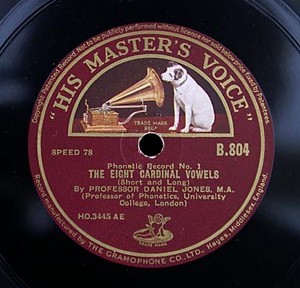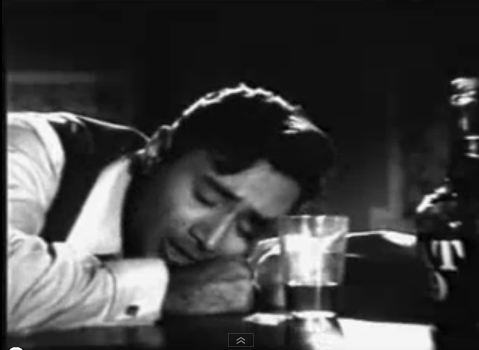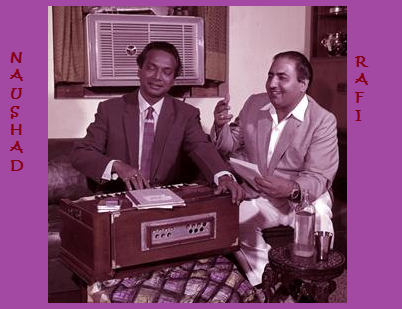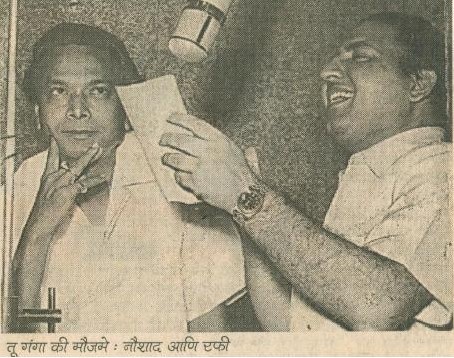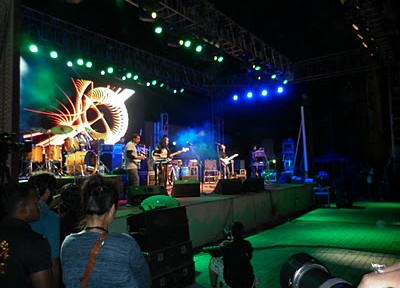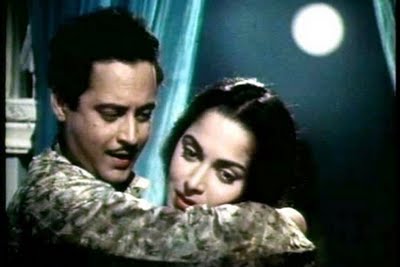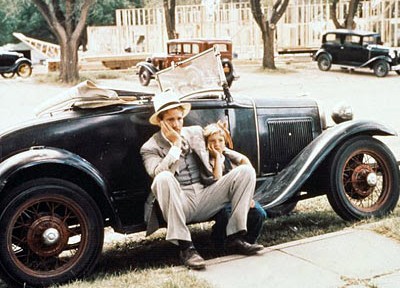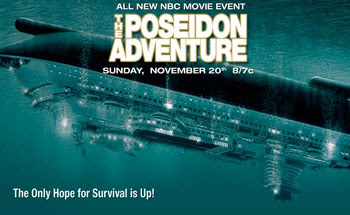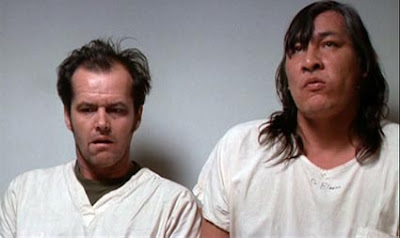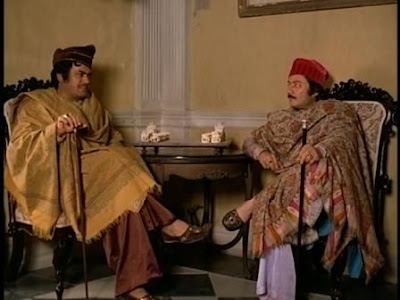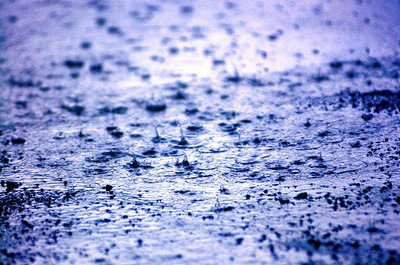The other day I was tempted to do a blog on the contribution of Bengalis to Hindi cinema and music. I would eventually do it; since there are too many stalwarts: Hrishikesh Mukherjee, Hemant Kumar, Pandit Ravi Shankar, Salil Chaodhary, Kishore Kumar etc, it will take me time to condense this into an average sized blog. Another name that comes to mind is that of Shakti Samanta; the maker (producer and director) of such popular movies as Howrah Bridge, the first film he made, with Ashok Kumar and Madhubala after he founded Shakti Films in 1957. He was born in Burdwan, Bengal, on 13 Jan 1926 and he completed his education from Calcutta University in 1944, though his schooling was in Dehradun.
A total of 43 movies were directed by him (37 in Hindi and 6 in Bengali). He had joined the Hindi films in 1948 and initially he was an assistant director (he had actually joined to become an actor!) for a Raj Kapoor starrer Sunhere Din and a few other movies. His first directorial film was Bahu in 1954. Some of his most successful movies, in addition to Howrah Bridge were Kashmir Ki Kali, Aradhana, China Town, Kati Patang, An Evening In Paris, Amar Prem (about which I have already written), Pagla Kahin Ka (with one of my favourite songs: Tum mujhe youn bhula naa payoge), Ajnabee (Shakti Samanta could actually make Zeenie baby act), Anurodh and Balika Badhu.
His first directorial ventura Howrah Bridge had this Geeta Dutt song: Aaiye mehrabaan baithiye jaane jaan, sung in the movie by Madhubala. What was so catchy about the song; other than the huge-eyed Madhubala? Well, you have guessed it: the inimitable music by OP Nayyar.
So, before I introduce you to the movie of today, let me tell you a wee bit about OP Nayyar. The other day I was watching a tribute to OP Nayyar on a late night show on the telly. He didn’t let Lata Mangeshkar sing any of his songs. The reason? He didn’t find her voice sexy enough! So, it was Geeta Dutt and his heart-throb (in the programme he called her “almost a wife to me”) Asha Bhosle. He was the only music director who gave some of the best numbers to supporting actors; the best that comes to mind is ‘Ai dil hai mushkil jeena yahan, yeh hai Bomabay, meri jaan’, which was picturised on Johnny Walker. OP Nayyar’s music was foot tapping, horse-trot, and so popular that he must be having a record of sorts for having the maximum number of super hit songs in movies.
With this lets come to the movie of today: Kashmir Ki Kali (Blossom of Kashmir), the debut film of Sharmila Tagore (another Bengali and the great grand niece of Nobel Laureate Rabindra Nath Tagore); she having acted in and as Kashmir Ki Kali.
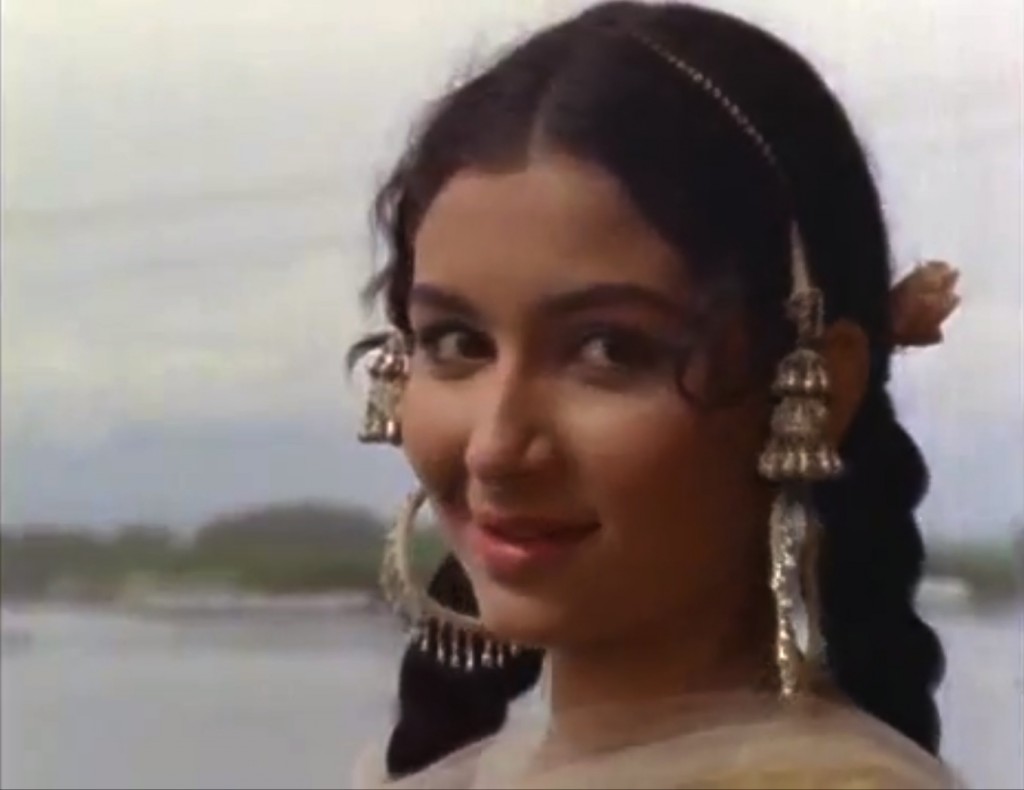
Lets take a brief look at the story before we come to the ever-green songs of KKK:
Wealthy and pampered Rajiv Lal (Shammi Kapoor) is the only son of widowed Rani Maa. At the silver jubilee of the mill that his father, the late Sanjiv Lal, opened 25 years ago, he announces a prize reward of 5 lakh rupees for all the workers, annoying his mother. A servant at the house, Karuna (Mridula Rani), suggests marrying him off to stop his immature antics, to which Rani Maa agrees. Her manager, Shyamlal, arranges for her to meet some girls, as she insists that Rajiv will marry a girl of her choice. Rajiv returns home and sees all the girls – he correctly surmises that his mother is getting him married, and he pretends to be a mute who walks with a limp in order to chase all the prospective suitors off. His plan succeeds, although he is in a dilemma – what should he do now? His mother is furious at him. One of his friends suggests that he should run away to their bungalow in Kashmir – after all, Rani Maa never goes there.
Upon arrival, he finds that his estate manager, Bholaram (Dhumal), has made a hotel out of their bungalow and has even rented out some rooms for the season. He tells the tenants that he is Rajiv Lal, although when he meets Bholaram, the latter informs him that Rani Maa had called him, and told him not to let Rajiv stay at the bungalow, should he come. Rajiv manages to convince Bholaram to tell Rani Maa that he is not there. Bholaram tells the tenants in the house that Rajiv is in fact mad, and in his madness, thinks that he is the real owner of the estate.
The next day, Rajiv meets Champa (Sharmila Tagore), a girl who sells flowers for a living. He buys her flowers for 20 rupees when they are priced at 5 for the whole basket, and tells her that he is not the owner, but the driver. Soon enough, after a few misadventures, they fall in love and decide to marry, but there are a few obstacles. First of all, Mohan (Pran), the forest manager, has loaned out some money to Champa’s father, Dinu (Nazir Hussain), and he insists that he will marry Champa if Dinu cannot repay the debt.
With this background, lets now look at Kashmir Ki Kali’s songs that were penned by SH Bihari and music was composed by OP Nayyar. Before that, shouldn’t we say a bit about the lyricist SH Bihar, who was – you guessed it – from Bihar; that was rather easy, isn’t it? But, how many of you would know that besides writing in Hindi and Urdu, he was also fluent in Bengali? He is the lyricist of my chosen best-love-song-ever written: ‘Na ye chand hoga na tare rahenge’ for the 1954 movie Shart and sung by two of my favourite Bengali singers: Hemant Kumar and Geeta Dutt. I often quote this song for a becoming directness displayed by a woman in the year 1954 when even to look at a man longer than a few seconds was considered bold. Taste this:
Kahun kya mere dil ka armaan kya hai
Tumhen har ghadi choomna chaahata hai
Kahan tak bhala dil ko maare rahenge
Na ye chand hoga…
Some of the other songs of SH Bihari are:
Aap se maine meri jaan mohabbat ki hai
Zulfon ko hata lo chehre se
Raton ko chori chori
Unse mili nazar ke mere hosh ud gaye
Lakhon hain yahan dilwaale
Kajra mohabbat waala
and, Zara haule haule chalo mere sajana
Okay, then, the long wait is over; and we are ready to re-introduce you to ever-fresh songs of Kashmir Ki Kali.
My choice number one is Isharon isharon mein dil lene waale, a duet between Mohammad Rafi and Asha Bhosle, and Sharmila coyly telling Shammi Kapoor who is more used to openness in love:
Mohabbat jo karte hain vo,
Mohabbat jatate nahin;
Dhadkane apne dil ki kabhi,
Kisi ko sunaate nahin…
Enjoy:
Guys and gals, if you have liked the post so far, do I have your permission to put on the second song: Ye chand saa roshan chehra; in which OP Nayyar has done wonders with just one word Taareef? Thank you, here goes. Sound of Taareef is accompanied by clapping or applause in the song that only OP Nayyar could have accomplished.
However, before we proceed to the song, and even though I have written volumes about Mohammad Rafi, it is still alright to take a pause and think of his excellence of singing and getting into the personality of the hero through his singing. Knowing that Shammi Kapoor was boyish and sexy (a la Elvis Presley), he has given him that kind of voice in the song.
Enjoy: Ye chand sa roshan chehra…
And if you feel that Mohammad Rafi did wonders in the previous song, then you better know how to receive the next one! These are the songs through which we feel Mohammad Rafi was God of Songs. This is the song about describing the beauty of the flower girl Sharmila. The other day, I did mention that when it came to singing about women’s husn (beauty) there was nothing to beat Mohammad Rafi. Oh, you didn’t read that? Well go on Lyrical and watch Mohammad Rafi sing for Dharmendra: Zikar hota hai jab qyaamat ka, or Chaudhvin ka chaand, or Husn waale tera jawaab nahin, or Main nigaahen tere chehre se, and Aapke haseen rukh pe aaj naya noor hai.
Anyway, here, enjoy: Suhaan allah, hai, haseen chehra, hai….
Bhangra artists were specially taken from Punjab to Kashmir for this song but the weather turned bad and they had to wait for a few days before it was sunny. Well, it was well worth the wait. Here is the Bhangra song: Hai re hai ye mere haath mein tera haath….meri jaan balle balle…What would a Bihari know about Bhangra? Isn’t that the greatness of India and Hindi movies?
Enjoy:
Having declined to marry at the behest or urging of his mother, Rani Maa, here is Shammi Kapoor telling you why. According to him the world belongs to him who has someone to love. Youth and the equisite beauty of Kashmir would stand witness to these sentiments. It required someone like SH Bihari to capture them and OP Nayyar to set the chords afire and Mohammad Rafi to voice them so lyrically.
Enjoy: Ye duniya usi ki, zamana usi kaa…
The lyrics of this song are outstanding to express young first love and the interlude o ho ho, aa haa haa sets the pace for the song: ye dekh ke dil jhooma, li pyaar ne angdaayi…diwana hua baadal.
Now that Shammi Kapoor has left us, can you just close your eyes and imagine him sing this lovely number with his boyish romantic antics? When pyaar takes angdaai, he takes angdaai himself! And she? Well, she says she was reduced to being a mere twig in the current of love.
Enjoy: Diwana hua baadal…
You have to now think of Shammi Kapoor running away from the bondage of an impending marriage to the freedom of Kashmir and talking aloud (singing) that finally he would have to fall in love (just as good as that a man has to find a job or become a graduate!). To express these feelings, SH Bihari wrote the most wonderful lyrics.
Enjoy: Kisi na kisi se dil lagana padega…
And if Shammi Kapoor is thinking of romance in the invigorating air of the Paradise on Earth: Kashmir, Sharmila is not far behind. Here is Asha Bhosle singing for her in her “sexy” voice: Balmaa khuli hawa mein…
Enjoy:
No sad song in KKK, you will ask me? Is OP Nayyar only about lively songs? No, guys and gals, you have another guess coming. And the same is true for Asha Bhosle too. She too can sing a sad number with ease.
Enjoy: Phir thes lagi dil ko, phir yaad ne tadpaya…
If you think the only love affair was between OP Nayyar’s heroes and heroines in the movies, you haven’t heard all. The moment Asha Bhosle stopped singing for OP Nayyar, he took a vow never to compose music again. Real time love is greater than reel time love, is it?
What about Shakti Samanta? He received the Best Film awards for Aradhana, Anuraag and Amaanush…..however, Kashmir Ki Kali remained a favourite with him until he died on 9th April 2009. Sharmila Tagore remained his favourite actress…..Amar Prem?
Kashmir may be considered by Pakistan as a bone of contention. However, as far as India and Indians are concerned, it is a symbol of love….an ever-fresh love….like Kashmir Ki Kali.
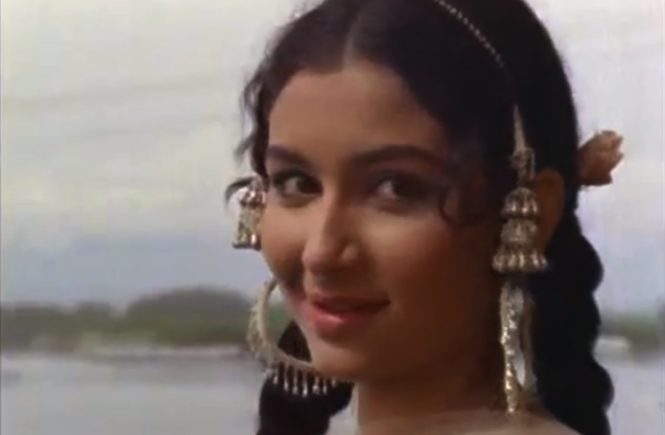
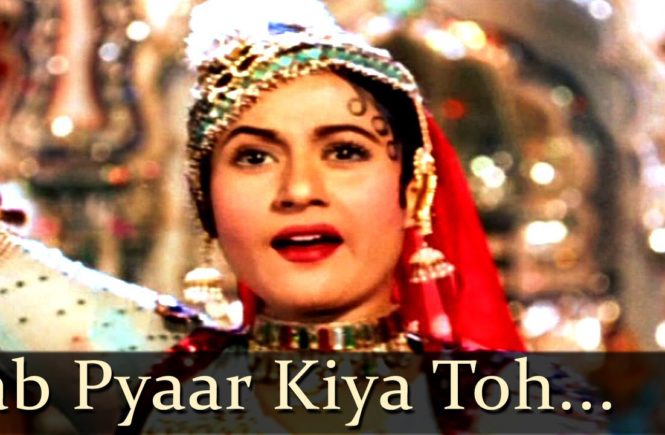
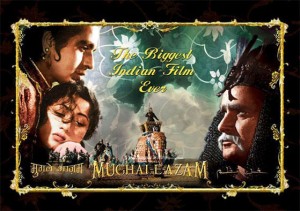
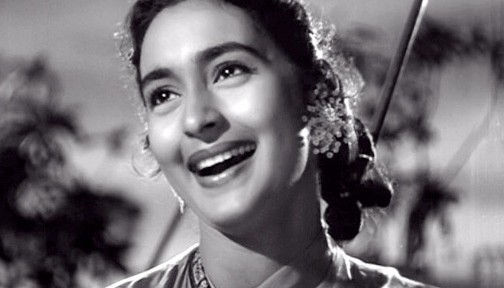
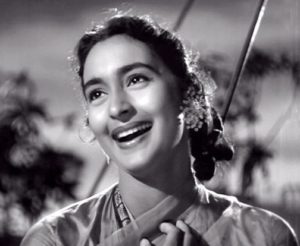
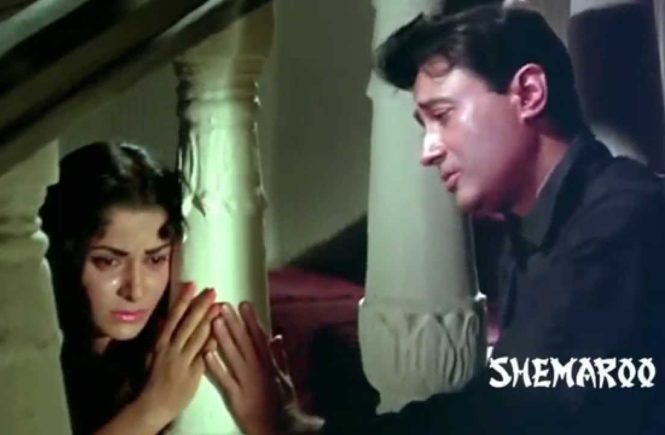
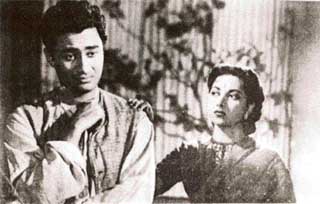
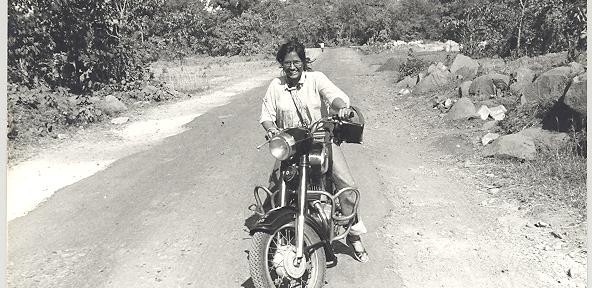
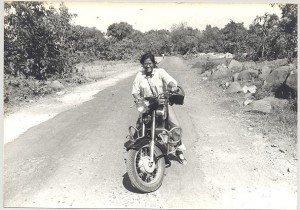
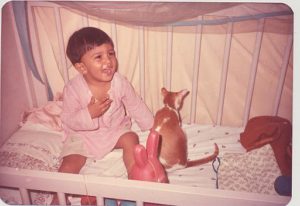
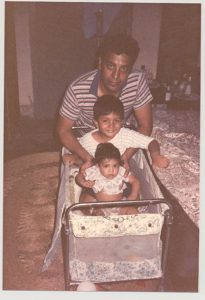
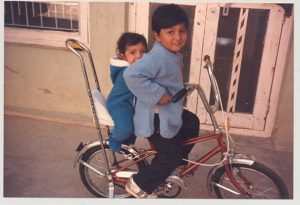
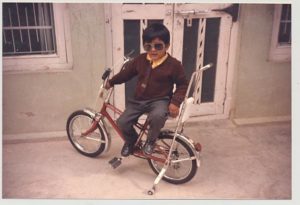
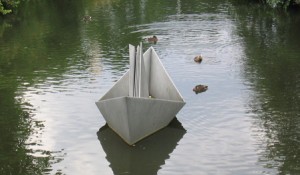
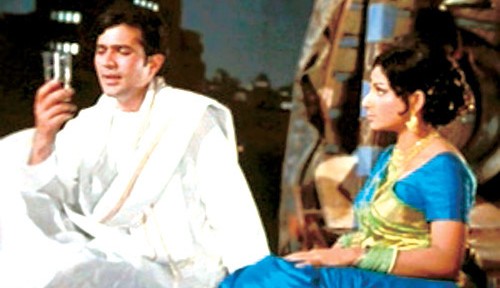
 Anand Bakshi’s lyrics were extremely apt and subtly hard-hitting, eg, “Tu kaun hai tera naam hai kya Sita bhi yahan badnaam hui.”. Rajesh Khanna and Sharmila Tagore both underacted superbly.
Anand Bakshi’s lyrics were extremely apt and subtly hard-hitting, eg, “Tu kaun hai tera naam hai kya Sita bhi yahan badnaam hui.”. Rajesh Khanna and Sharmila Tagore both underacted superbly.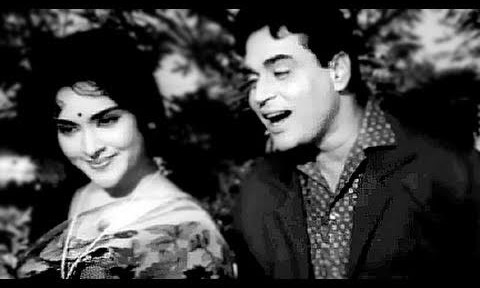
_-_All_Episodes.jpg)
